culture, japanese festival
Kodomo no Hi: Japanese Children’s Day
Linh Le
Posted on May 18, 2022
Share:
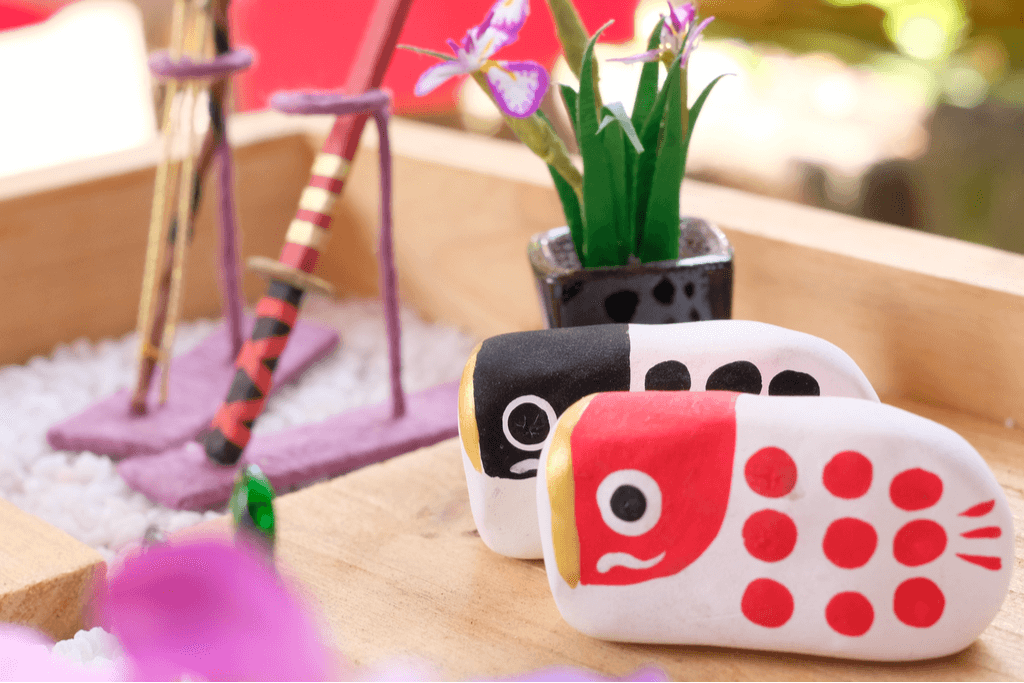
Children’s Day (Kodomo no Hi) is a national holiday and festival celebrated in Japan on May 5th every year – also making it the last holiday of Golden Week. As the name suggests, it’s a day to celebrate and pray for the growth of children. But there’s a lot more about its origins and customs that you may not know. Take a closer look with us at how Japanese people celebrate this day!
The Origin of Japanese Children’s Day
Originally, May 5th was called Tango no Sekku in Japan, while other Asian countries such as China, Korea, Vietnam and Hong Kong call it the “Mid-year Festival” or “Chinese Duanwu Festival”.
According to the lunar calendar, May 5th is a day that marks the transition from spring to summer – a time when epidemics are most likely to occur. Influenced by Chinese cultural customs, the Japanese Imperial family used to have rituals carried out to ward off evil spirits and distribute medicines to prevent illness across the country.
During the Kamakura period (1185-1333), Samurai families would hang flags called Nobori as well as helmets (kabuto) or weapons used in battle in front of their homes. Meanwhile, ordinary people would hang paper effigies of historical figures, such as the hero Benkei or Yoshitsune, to pray for protection for the whole family against disasters and diseases.
Since 1873, Japan began to use the solar or Gregorian calendar, so Tango no Sekku was changed to May 5th every year. Moreover, this holiday was initially for the boys mostly because girls had their own holiday (Girls’ Day) on March 3rd each year.
However, after World War II, Tango no Sekku (or Boys’ Day by this time) was renamed “Kodomo no Hi.” This made the day a celebration for both boys and girls with the hope that all children will grow up healthily and live a happy life.
Want to experience Japan’s rich culture at your own convenience? All you need is a taste of regional Japanese snacks from Sakuraco! Sakurco sends traditional Japanese sweets, snacks, teas, and tableware to your door from local Japanese makers every month, perfect for a fun and authentic at-home celebration just like the Japanese!
Japan’s Children’s Day Symbols and Traditions
Flag carp (Koinobori)
On Children’s Day, Koinobori (carp streamers or flags) are often hung outdoors, and when the wind rises, the air fills the carp-shaped streamer’s mouth, making it look like they are swimming in the air.
People will usually start hanging these colorful carp flags around the Spring Equinox on roofs or corridors of apartments of families with boys. Then, they are left up until the end of Golden Week or even until June.
A traditional carp flag set consists of a black carp, red carp, and blue carp. Black is usually on top as black represents the father, then red stands for the mother, and finally blue represents the children.
According to an ancient Chinese legend, the small but powerful carp swam through the fast flowing waters of the Yellow River, successfully crossing the high waterfall and transforming into a dragon. That’s why the Japanese choose the image of the carp to pray for the will, strength, and resilience to overcome all challenges in life for the boys in their family.
There are many major festivals celebrating Children’s Day with brilliant views of carp flags across Japan, such as the Tatebayashi Koinobori no Sato Festival in Gunma prefecture, Uzuma no Koinobori Festival in Tochigi Prefecture, and the Tokyo Skytree Carp Light festival.
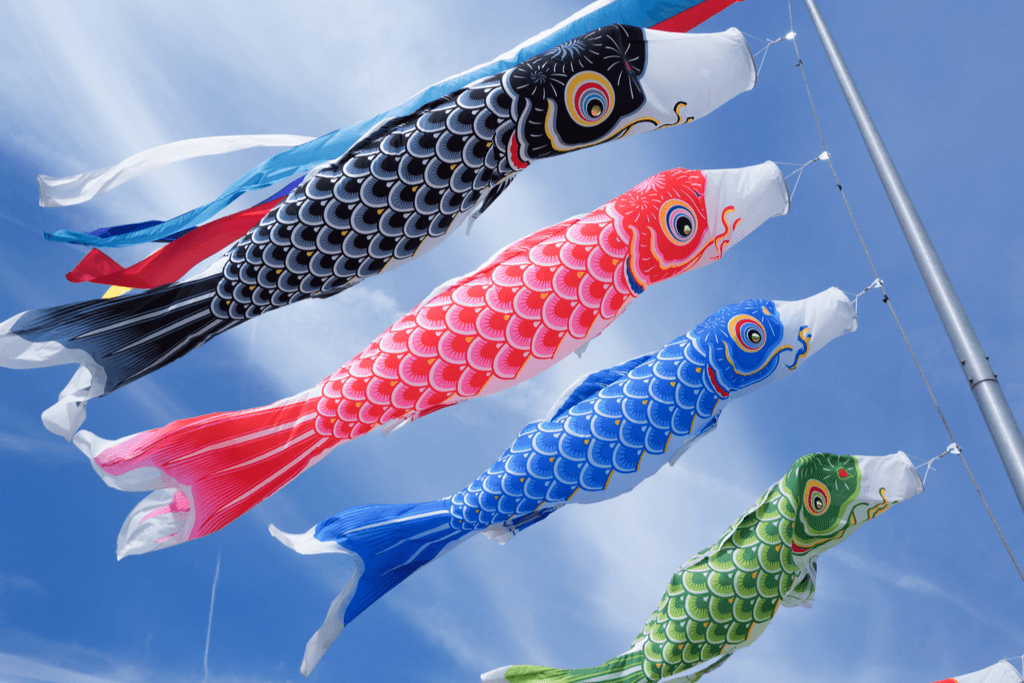
Kintaro doll and Kabuto helmet
On Children’s Day, Japanese families also display Kintaro dolls – a child hero character in Japanese legend, famous for having extraordinary strength even as a child. In the legend, Kintaro rode a large carp on its head wearing a samurai’s helmet (called kabuto).
The image of the iron helmet and Kintaro is now a symbol of a strong, healthy boy. Instead of spending money to buy a kabuto decoration, many families create their own helmets with creative origami paper folding.
An interesting fact is that Kintaro is actually one of the three famous ‘taro’ heroes of Japanese folktales, the other two being Momotaro and Urashima Taro.
Shobu Leaf (菖蒲)
The leaves of the shobu (iris flower or 菖蒲) have a strong aroma and many uses. At a glance, you will see that it resembles a sword, but what makes it so special is that Shobu (菖蒲) can also mean ‘martial spirit’ (尚武) or ‘victory or defeat’ (勝負).
On top of being used in bath water for good health, the shobu tree is a tree that Japanese ancestors used to make medicine and perform exorcisms. On Children’s Day, Japanese children will be bathed with water boiled from this plant so they can grow up strong, know how to fight against evil, and stand up for justice.
Food: Kashiwa Mochi (柏餅) and Chimaki (粽)
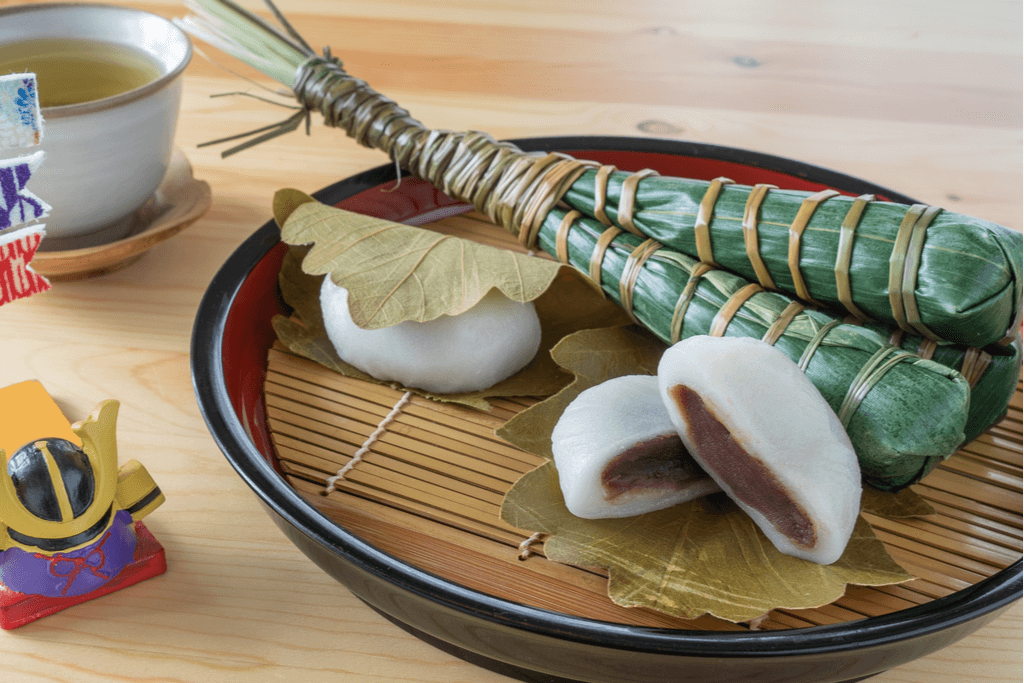
After bathing with shobu leaves, the children will eat 2 typical rice cakes made from glutinous rice, Kashiwa Mochi and Chimaki.
Kashiwa Mochi is made from mochi glutinous rice flour wrapped in red bean paste and wrapped in oak leaves. Meanwhile, Chimaki cake is another cake made from glutinous rice flour, but it’s wrapped with bamboo leaves instead of oak.
Because oak and bamboo represent strength and a successful life, Japanese people believe that these cakes will bring good luck and fortune to their children.
Does your country have any special occasions similar to Japanese Children’s Day? If yes, share with us about it in the comment below!

Discover authentic flavors with Sakuraco
Get Sakuraco 

Discover authentic flavors with Sakuraco
Get Sakuraco 
Related Articles
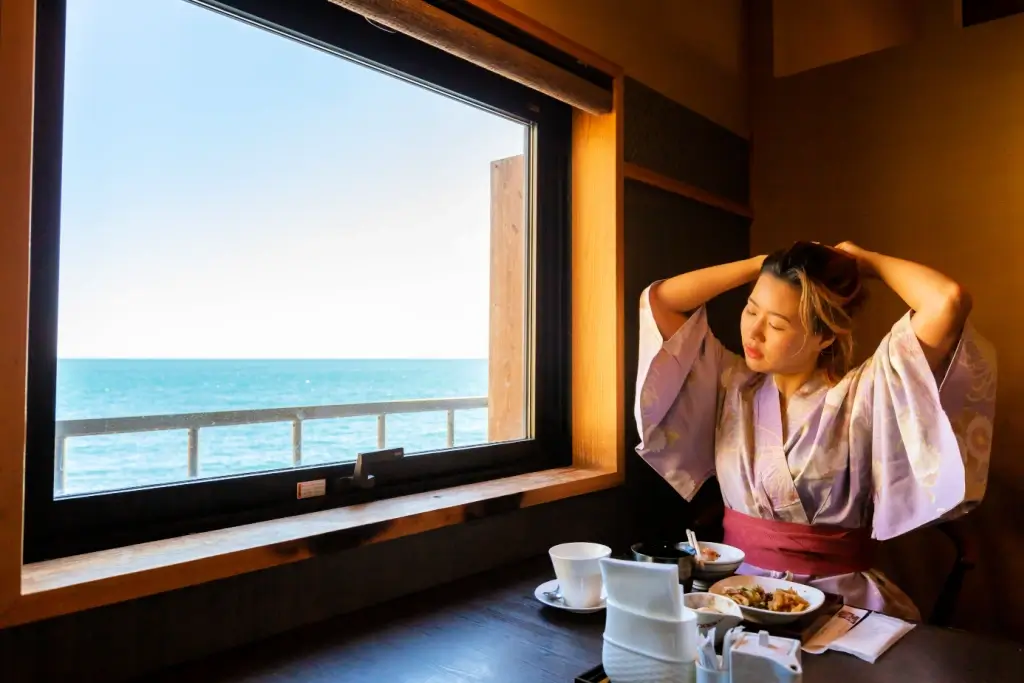
Hotels in Japan: Best Ones to Visit!
Japan is packed with hotels that promise unforgettable experiences, blending world-class service, jaw-dropping views, rich history, and a dash of the country’s unique traditional flair!
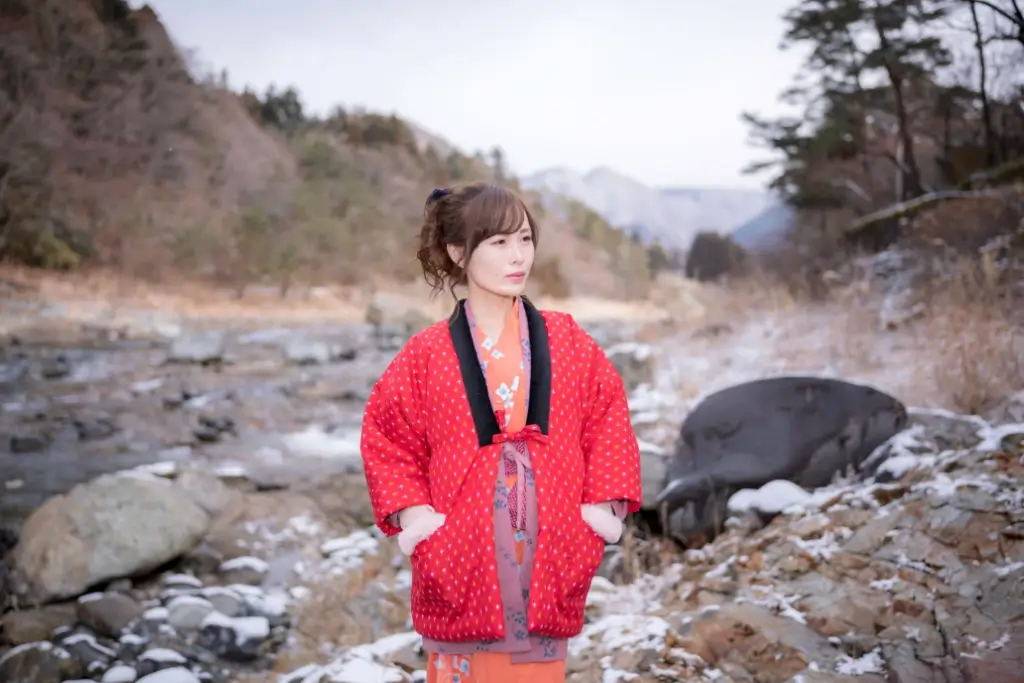
Hanten: The Ultimate Winter Coat from Japan!
Hanten, offer practicality and are symbols of traditional Japanese fashion, alongside the famous kimono. Join us as we explore hanten and some other beloved Japanese winter jackets!

What is a Japanese Wedding Like? A Look Into Shinto Rituals
A Japanese wedding is a beautiful example of how the country combines ancient rituals with modern influences. A traditional ceremony often revolves around Shinto practices, symbolizing purity, harmony, and good fortune. But, over time, couples in this country have also embraced Western weddings.

Japanese Calendar: What Are Microseasons?
The Japanese calendar includes many beautiful events, some popular globally and others less known. Kō (microseasons) were once celebrated but replaced by Western seasons



